This post may contain affiliate links to tours and hotels. These help us earn a small commission at no additional charge to you.
The Roman city of St Albans (once known as Verulamium) is a historic Hertfordshire city and market town, with some of Britain’s oldest and best preserved buildings and over 2,000 years of stories to share.
From the peaceful and perfectly appointed Vintry Garden overlooking the cathedral to ancient pubs (and a waffle house located in a watermill!), there are some unique and interesting attractions in St Albans.
Within easy access of London (just a short 20 minute train ride from King’s Cross St Pancras Station), make a modern-day pilgrimage with our top things to do in St Albans, Hertfordshire.
Table of Contents
Getting to St Albans from London
Given how frequent the trains are from St Pancras Station (approx 2 to 4 trains every hour) the best way to get to St Albans is by train (this also saves you having to look for a parking spot – hurrah!).
The trains from London St Pancras to St Albans vary in duration but try to get one of the most direct trains, meaning the journey can take less than 20 minutes – speedy as! Ticket prices start from £13.90 return based on a single adult passenger with no rail card as at February 2022.
Things to do in St Albans
1. St Albans Cathedral and Abbey Church
Likely one of the main reasons for visiting St Albans and its most popular tourist attractions, St Albans cathedral is simply stunning inside and out, and is free admission (although donations or purchases made in the cathedral cafe or gift-shop are always very much appreciated).
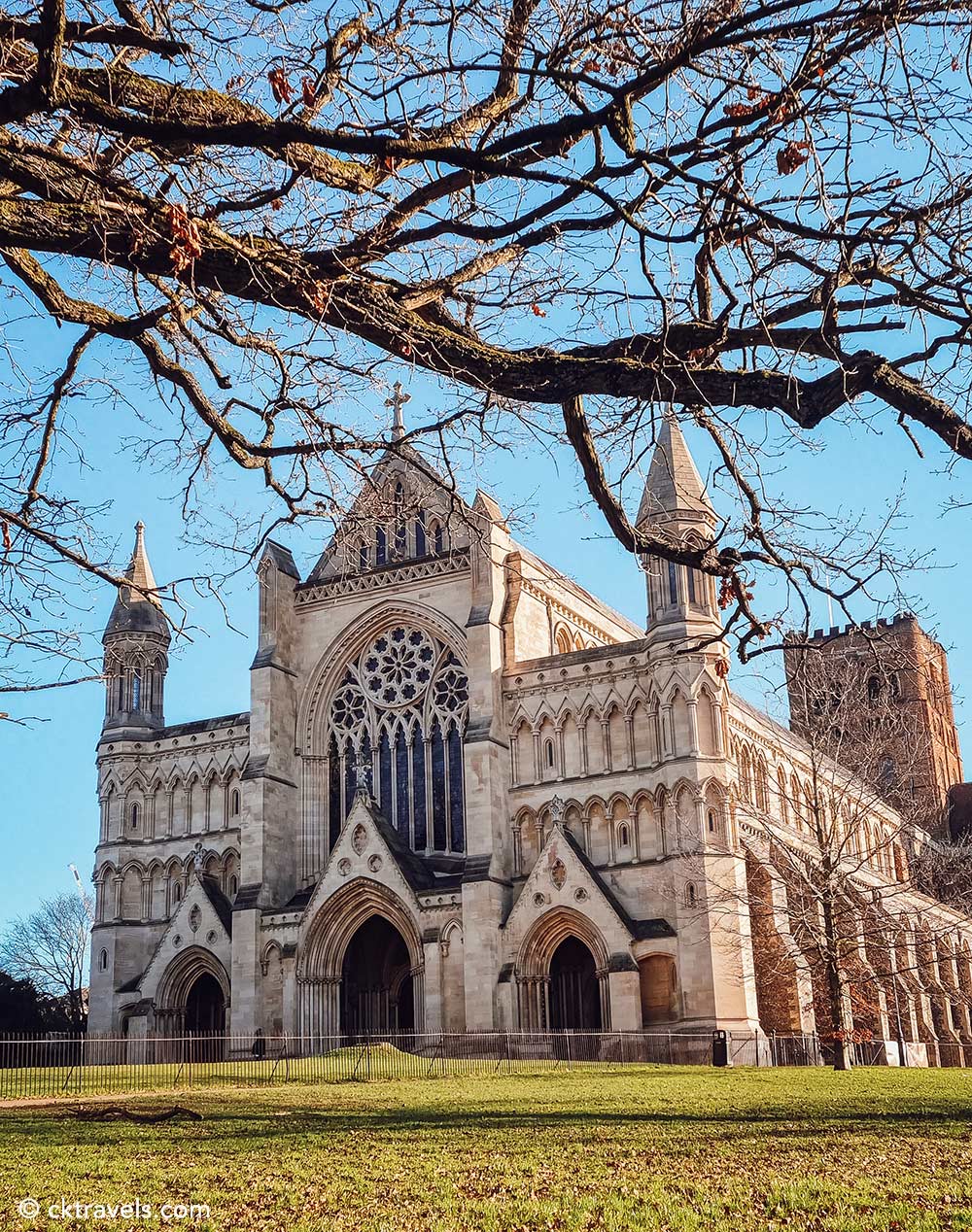
Historically, St Alban’s Cathedral and Abbey Church are the oldest continuous site of Christian worship in Britain, with over 1700 years of rich history and worship.
The cathedral has changed and been restored many times over its long life so we’d recommend first walking around the full perimeter (starting in Vintry Garden) to see it in its full glory before making your way inside to see the magnificent stained glass windows and longest cathedral nave in the country.
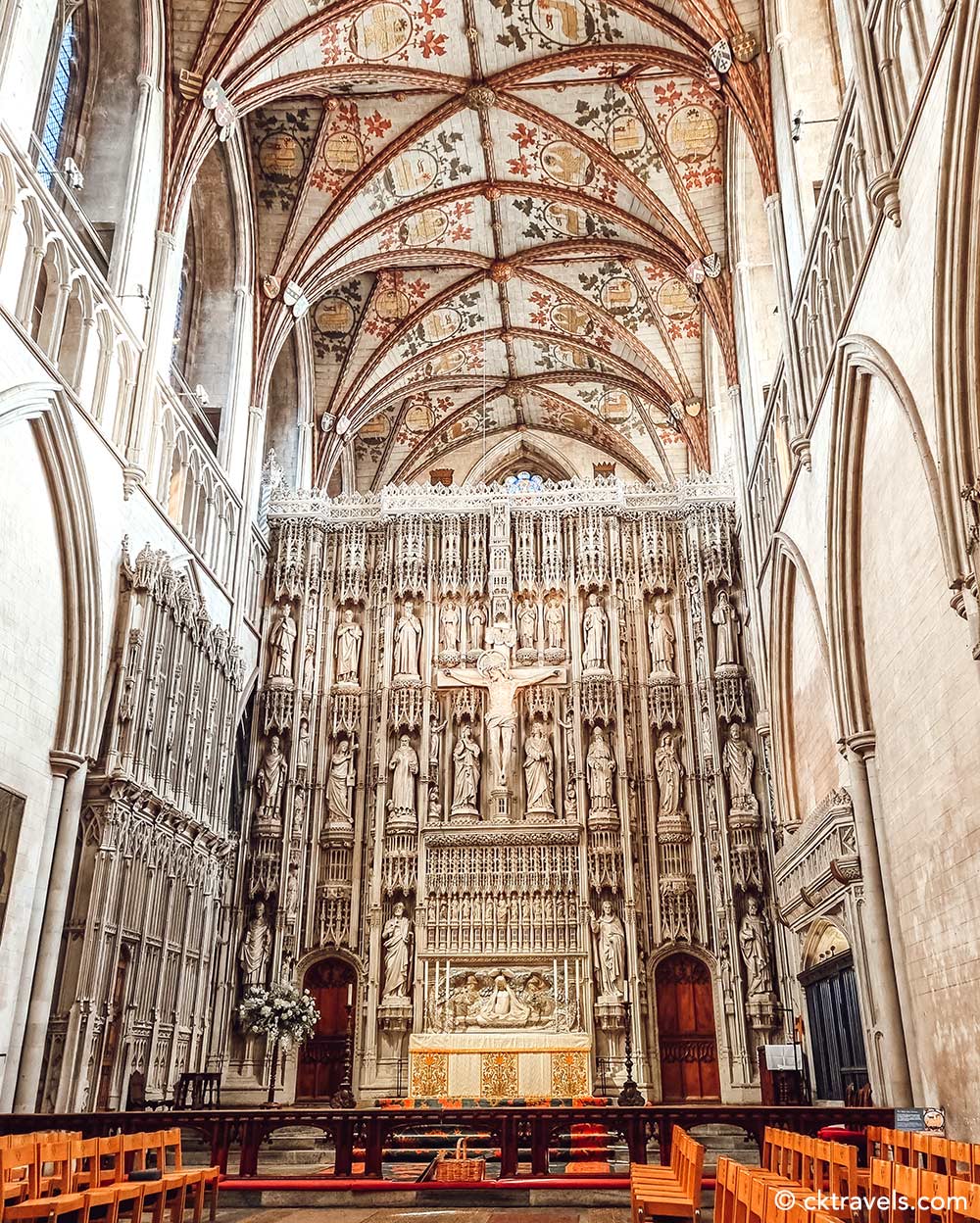
2. Ye Olde Fighting Cocks
Reputedly the oldest pub in Britain (aren’t they all?!), Ye Olde Fighting Cocks located on the edge of Verulam Park in Abbey Mill Lane dates back to anything from 793AD to the 18th century depending on the source, and almost looks like a country cottage when you first approach from the direction of St Albans Cathedral.
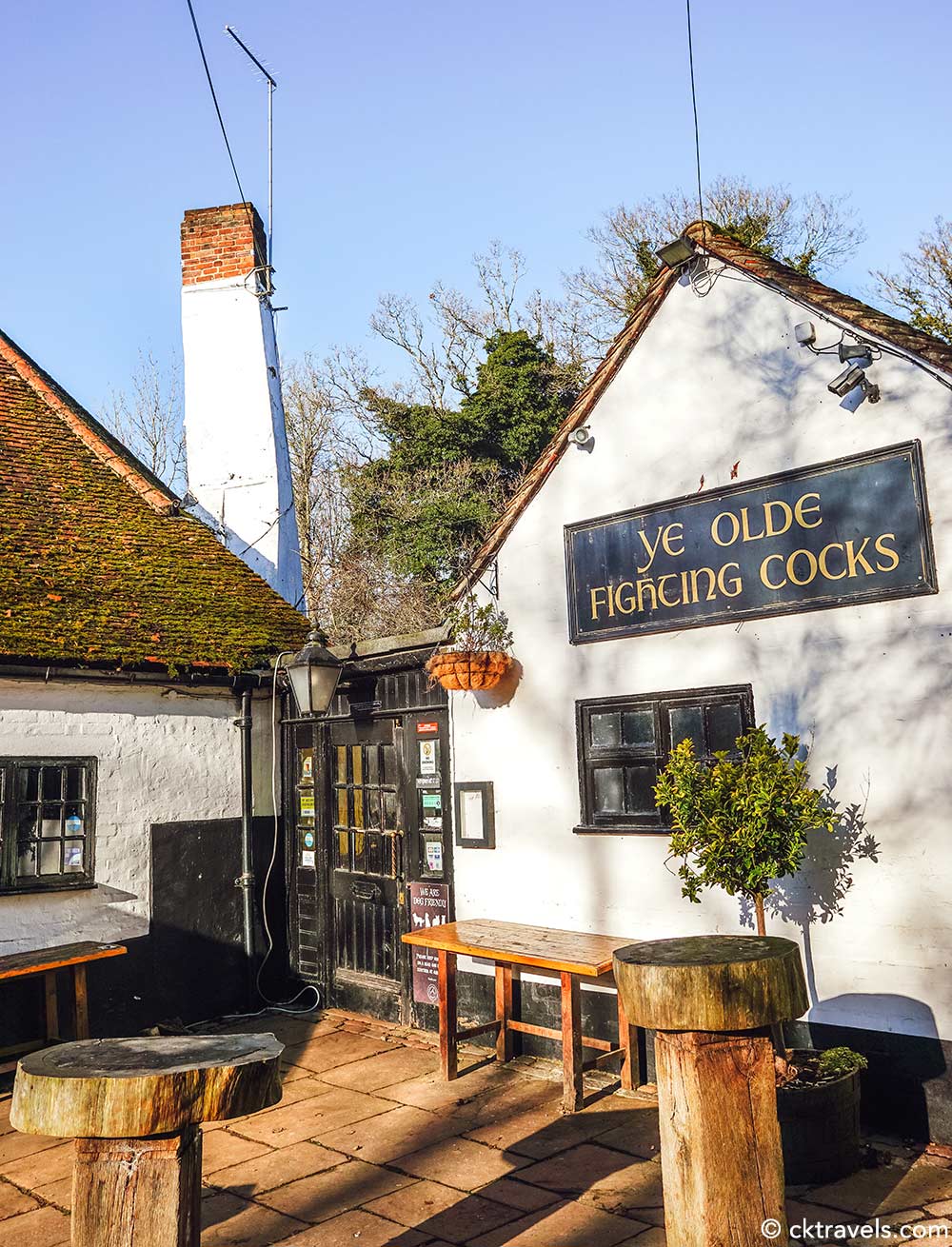
As you’d expect, the date and claim to being the oldest pub in Britain is contentious but records do show some form of licensed property has been on the site since the 1750s so it is pretty old.
What we do know is that is Ye Olde Fighting Cocks one of the prettiest countryside pubs you’ll see (mossily magnificent) and the interior is cosy and snug (and apparently crazy wildlife charity PETA aren’t a fan of the pub’s name – wait ‘til they see the menu inside!).
Ye Olde Fighting Cocks pub is located immediately next door to an open section of the River Ver so do take care if you’ve had a few drinks or are walking back in the dark (and no, we aren’t talking from personal experience…).
3. St Albans Clocktower
Constructed in the 14th century and a popular meeting place for locals, the St Albans clock tower is a picture perfect setting especially when the front gets the morning light.
The clock tower can be climbed (£2 admission fee applies – weekends and bank holidays only) offering nice views of nearby Market Square and St Albans Cathedral.
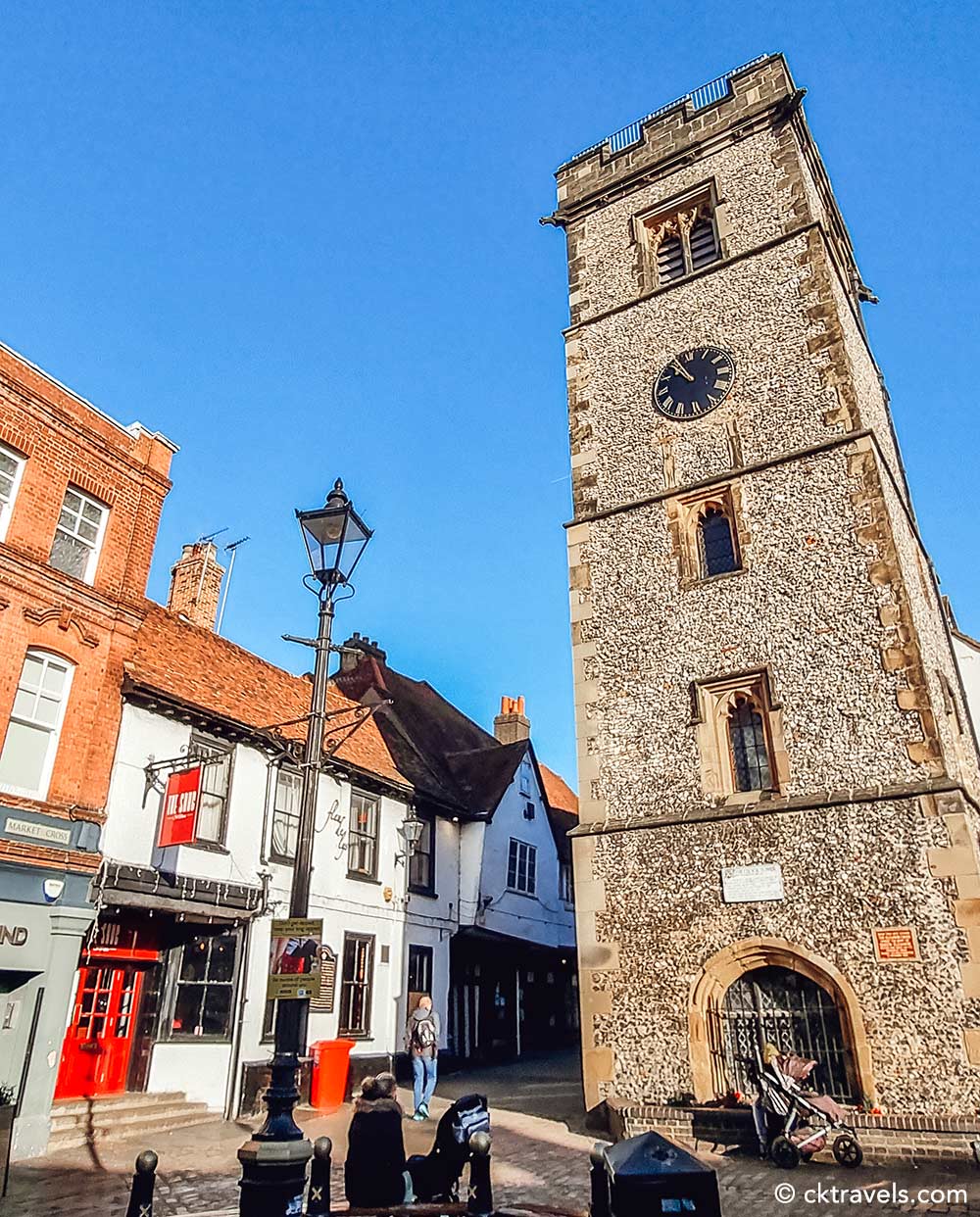
St Alban’s Clock Tower is the sole remaining medieval town belfry in England and was originally thought to have been built as a sign of protest against the power of the nearby abbey.
Also check out the side of St Alban’s Clock Tower by the French Row sign – you’ll see a tiny side store (which wouldn’t seem out of place in Hobbiton) which says ‘Commit No Nuisance’ – so we didn’t.
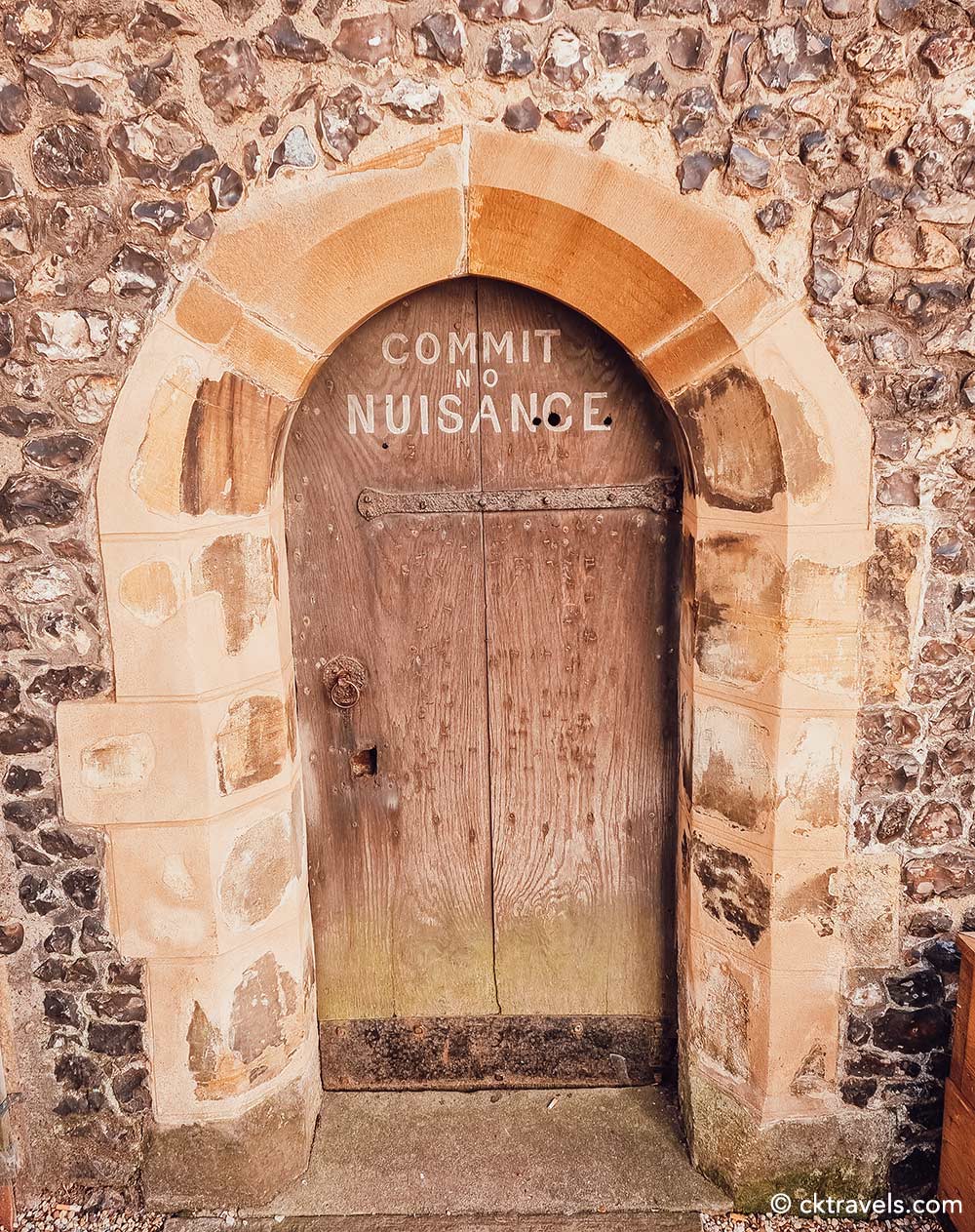
4. St Albans Marketplace / Charter Market
As well as numerous high street shops and restaurants (all the usual chains plus a few independents), St Albans is renowned for its famous street market (now with extra street food stalls) which sells all manner of items from fabrics to flowers.
At the time of writing (February 2022), the St Albans Charter Market takes place every Wednesday and Saturday, with an additional St Alban’s Farmers Market every second Sunday of the month. The historic setting makes St Alban’s markets a great day out in Hertfordshire, combined with the other high street shops.
5. Verulamium Park and Verulamium Lake
St Alban’s main park is a beautiful area to walk around, popular with dog walkers and the local ducks. Within the 100 acres of plush parkland, Verulamium Park has several ponds with bridges over them including the main Verulamium Lake – the last time we visited in February 2022, the pond was frozen over so the seagulls and ducks weren’t quite sure what to do!
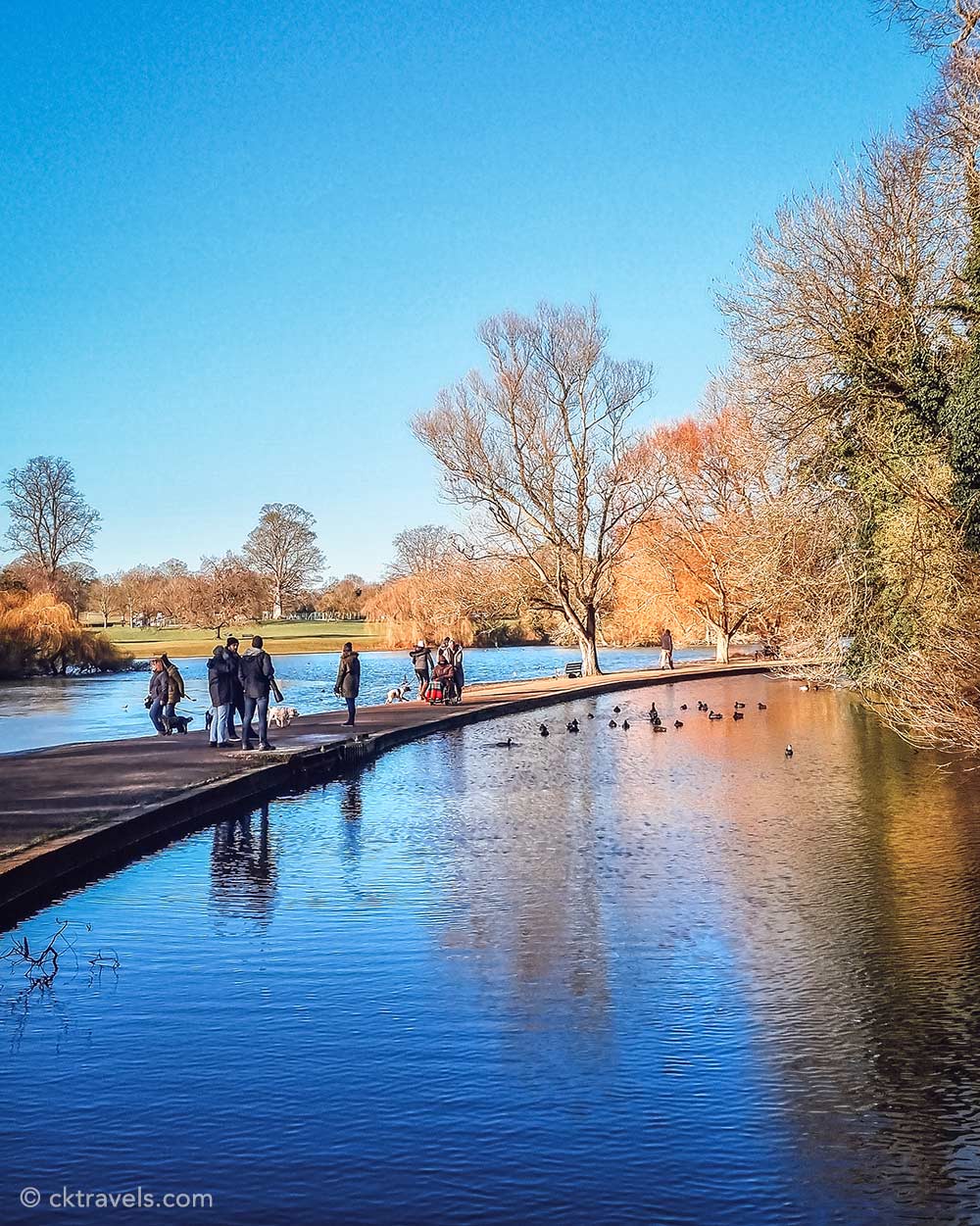
The park gets its name from the former Roman title of St Albans and you can still see elements of the Roman settlement within Verulamium Park with several Roman walls and ruins including the outline of former London Gate.
More modern day activities include a cafe, model boat pond and free toilets (handy if you’ve spent most of the afternoon in the nearby Ye Olde Fighting Cocks pub).
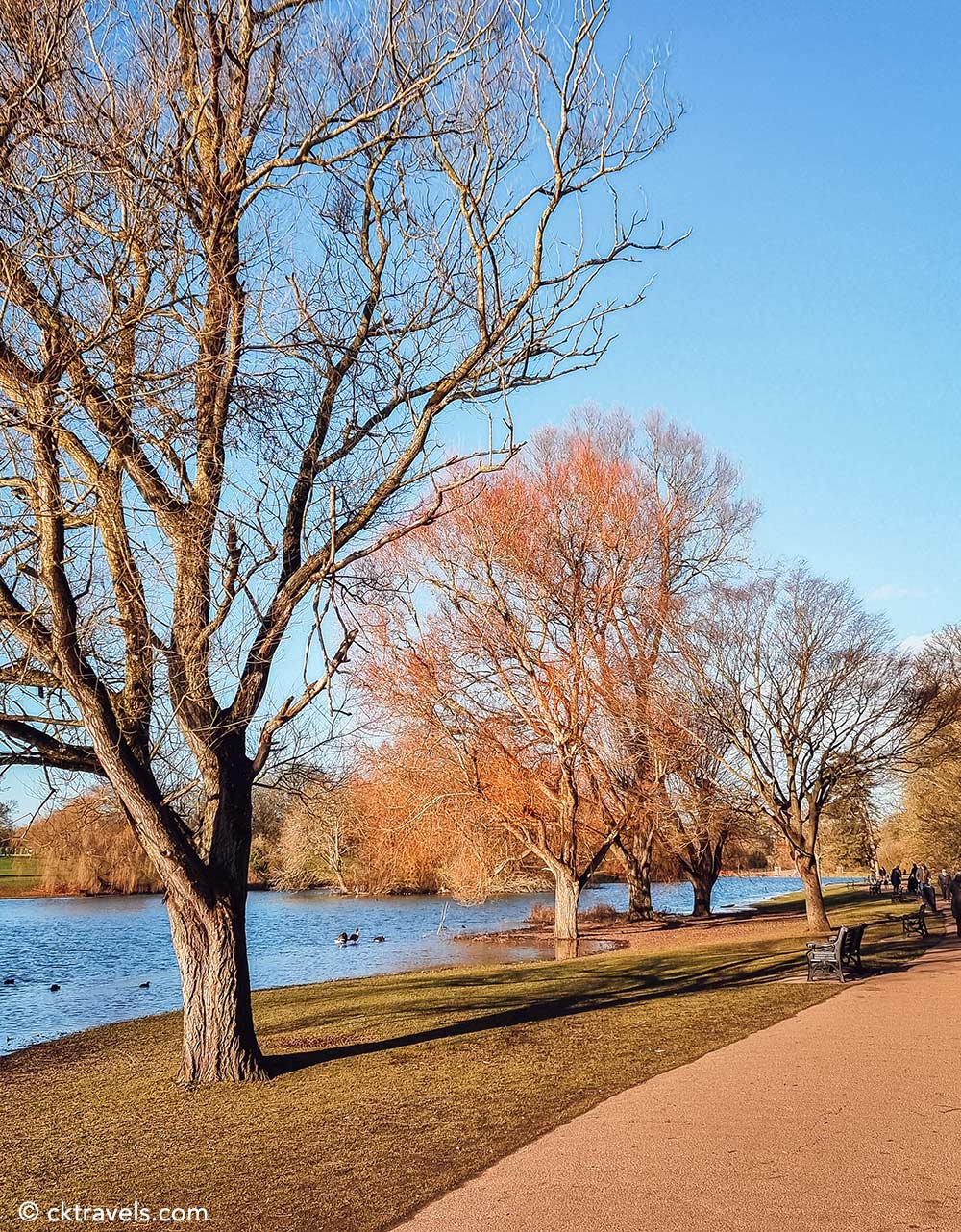
6. Verulamium Museum and Roman Theatre of Verulamium
Verulamium Park is also home to the Verulamium Museum (look for the superb circular building on the edge of the park and by the main car park), with its treasure trove of Roman objects and artefacts (including gold Roman coins), many of which have been excavating in St Albans over the years.
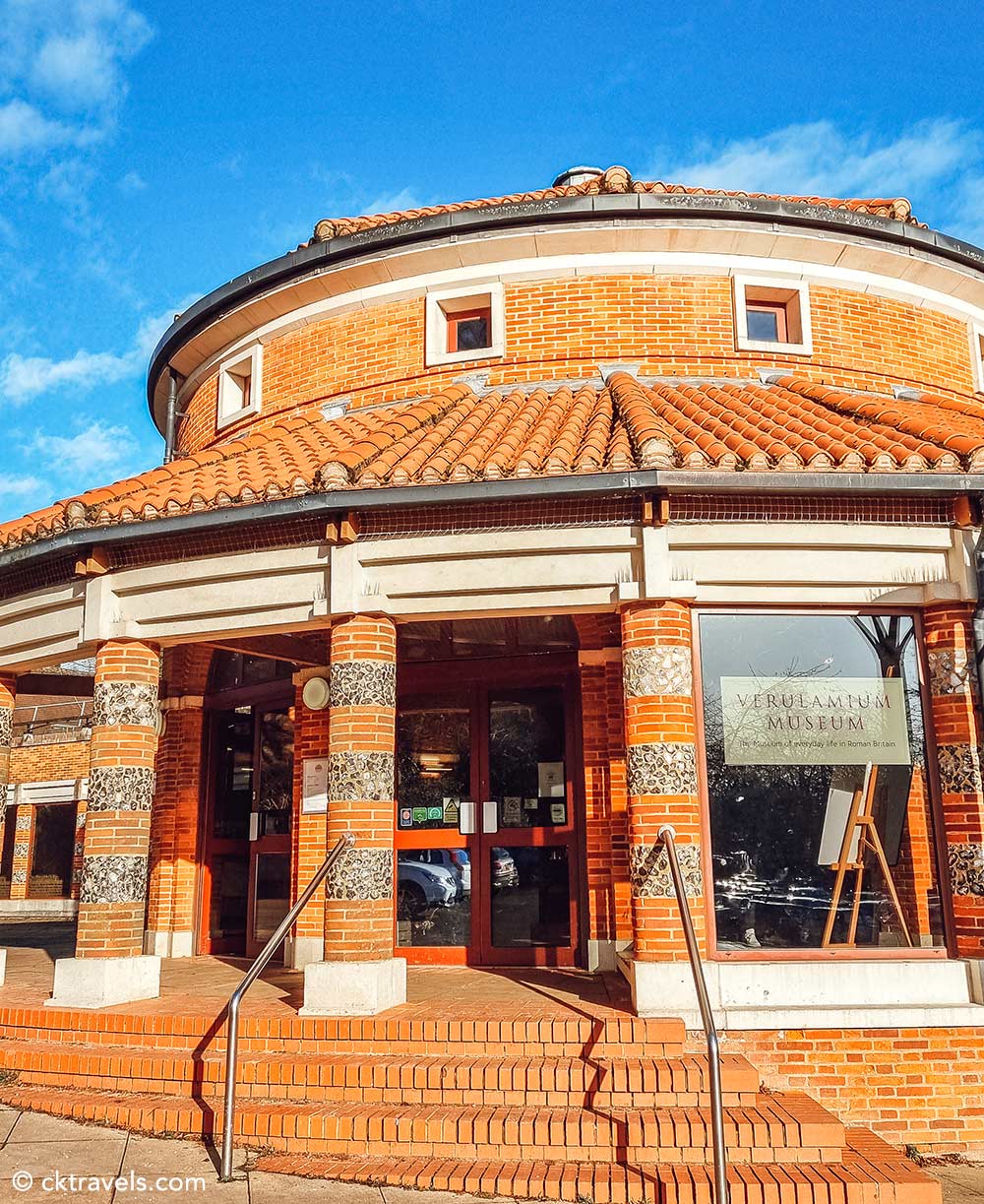
As well as recreated Roman rooms, there are guided talks and large scale mosaics. Adult tickets start from £6 (although free for locals) and if you are really into your history, best to get a combo ticket for £6.50 so you can also visit the nearby former Roman Theatre of Verulamium.
The theatre site is about a five minute walk away and was built in 140AD and would have housed upto 2,000 spectators at a time watching everything from shows to wild animals (think ‘Gladiator’ lite). It is the only example of its type in the UK having a stage set-up as opposed to an amphitheatre in style.
7. The Abbey Gate, Romeland
When we first arrived at this beautiful gate, we weren’t sure why we were greeted with the sounds of school children and piano playing but we’ve since learned it is now part of a grammar school (so good to see, and literally hear – historic buildings being used like this).
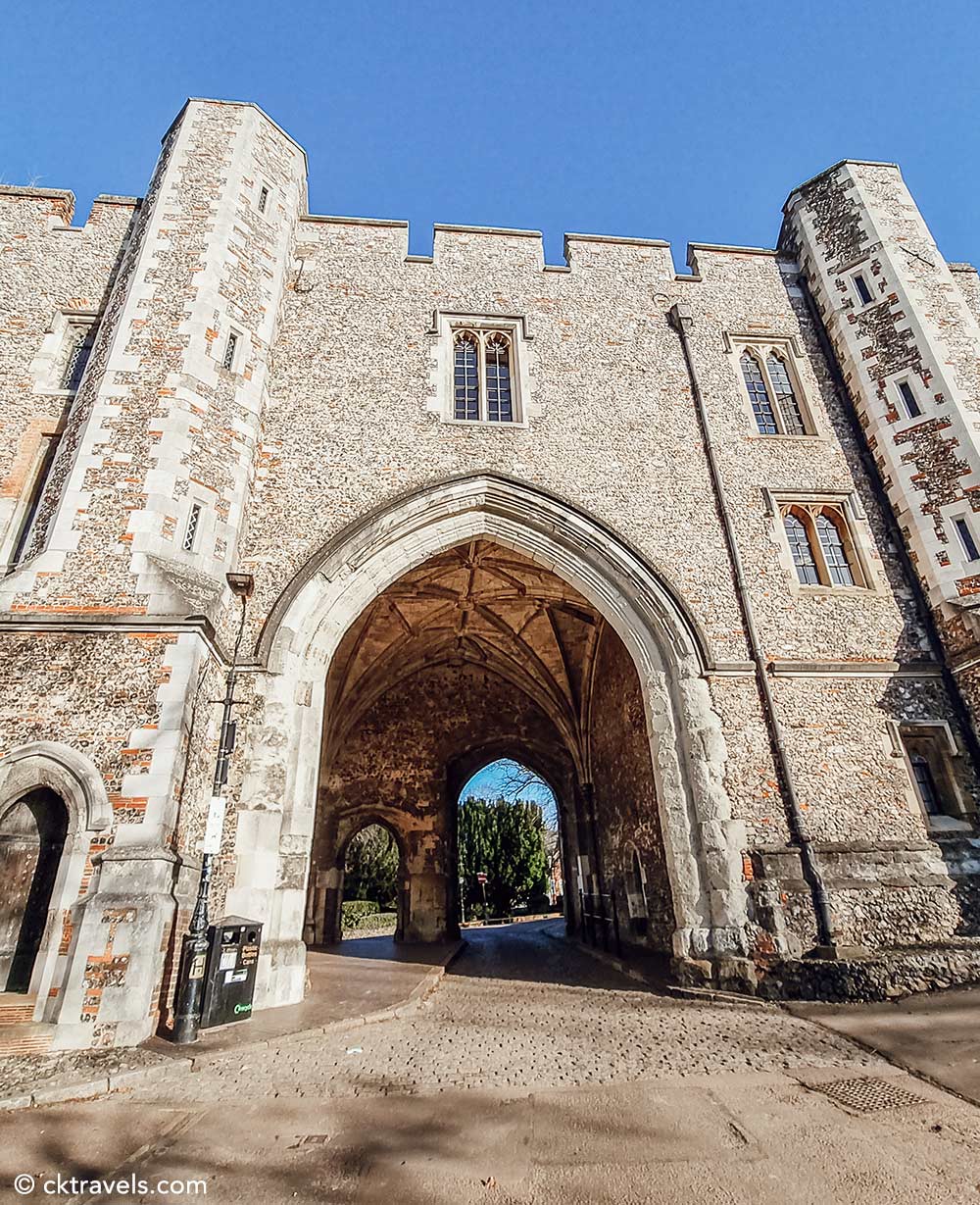
Located next to St Albans Cathedral and Abbey, the Abbey Gate was the ‘Great Gate’ that led to the abbey, having been built back in the 14th century – over the years, it was used for several purposes including a jail / gaol.
Abbey Gate provides one of the best photo opportunities in St Alban’s too as on a sunny morning, you can capture it in the morning light with St Albans Cathedral also bathed in sunlight. Note that as the Abbey Gate is now used as a school, the building is not open to the public.
8. The Waffle House
After so much exploring of ancient and historical sites, you may want time to relax or enjoy a coffee or sweet treat. If so, the most popular eating spot in St Albans is The Waffle House (seriously, we visited one wintery weekday morning and the queue was out the door and backing out into the car park).
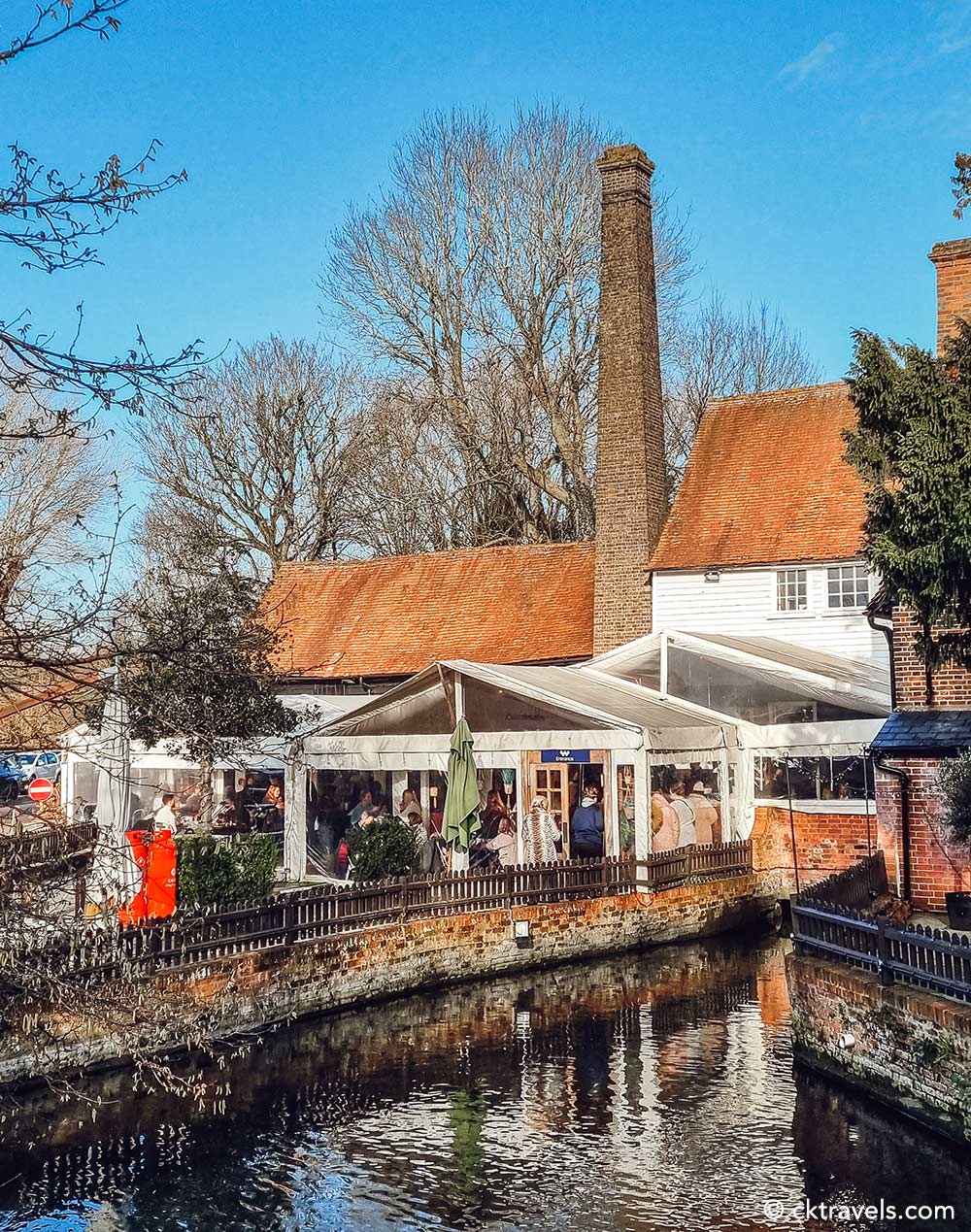
Located in a wonderful old watermill (still working but dating back from the 16th century – although the waffles are fresher) with views overlooking the nearby stream and River Ver, The Waffle House has been whacking out waffles and desserts since the late 1970s, with mouthwatering dishes such as a bacon waffle stack BBQ pulled pork. Seriously, just take our money now!
Note The Waffle House is closed on Tuesday in case this was high on your St Albans things to do list.
9. St. Albans Gallery and Museum
Free to visit and based over three floors in the heart of the shopping area, St Albans Gallery and Museum is a good place to start your trip to the area, with a tourist information centre and over 2000 collection items relating to local history.
The building is also St Alban’s Town Hall, Assembly Room and a former courtroom and cell block all of which you can visit.
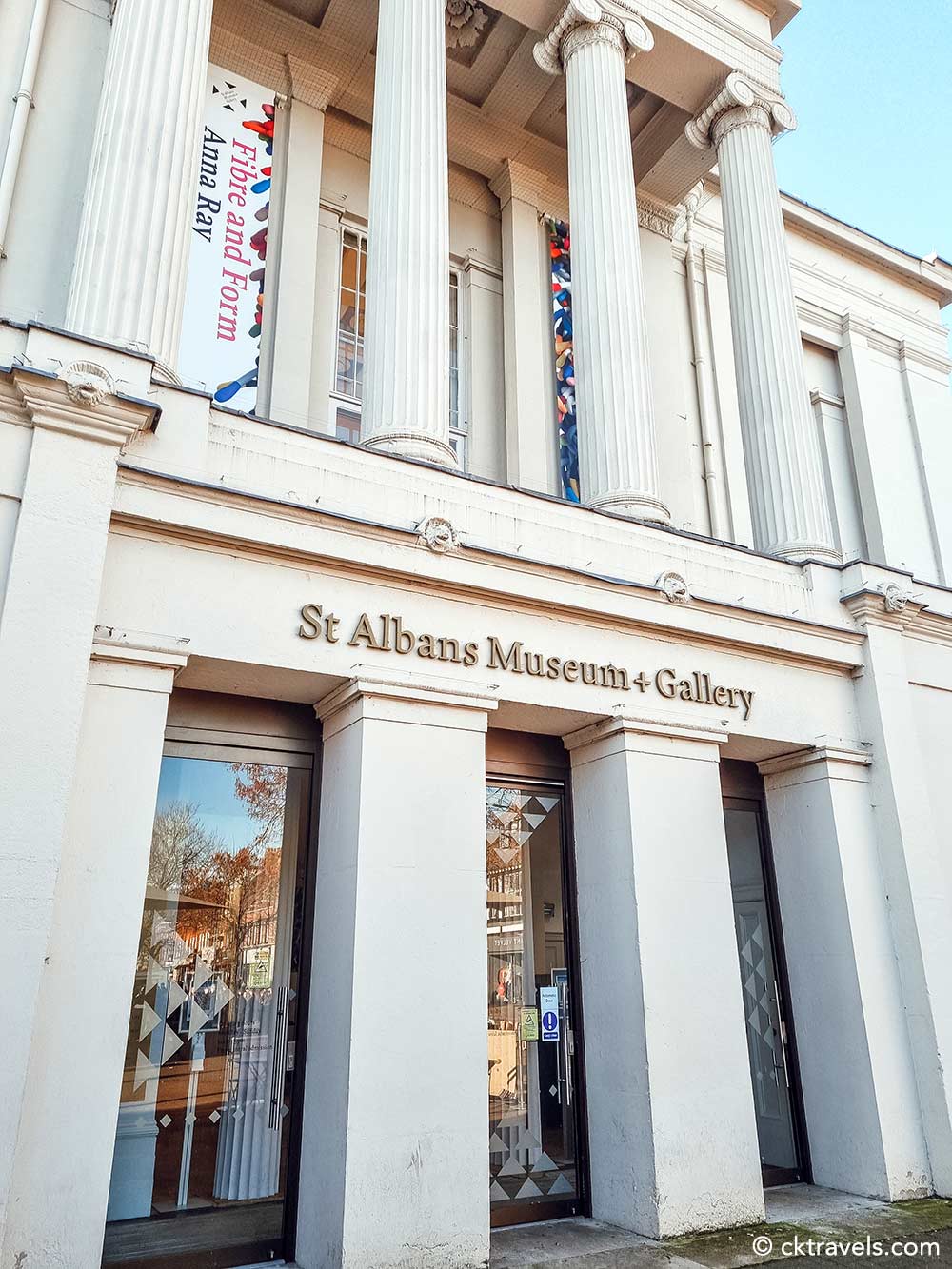
Daily tours of St Alban’s Gallery and Museum take place at 2.30pm and and as well as a permanent display and collection. The stately city centre building has temporary local history exhibitions and too – check their website for details.
10. St Albans Signal Box Preservation Trust
One of the more unique activities in St Albans, the St Albans Signal Box Preservation Trust is a collection of vintage train and railway related items located in sidings of the much more modern (and mundane) St Albans City railway station.
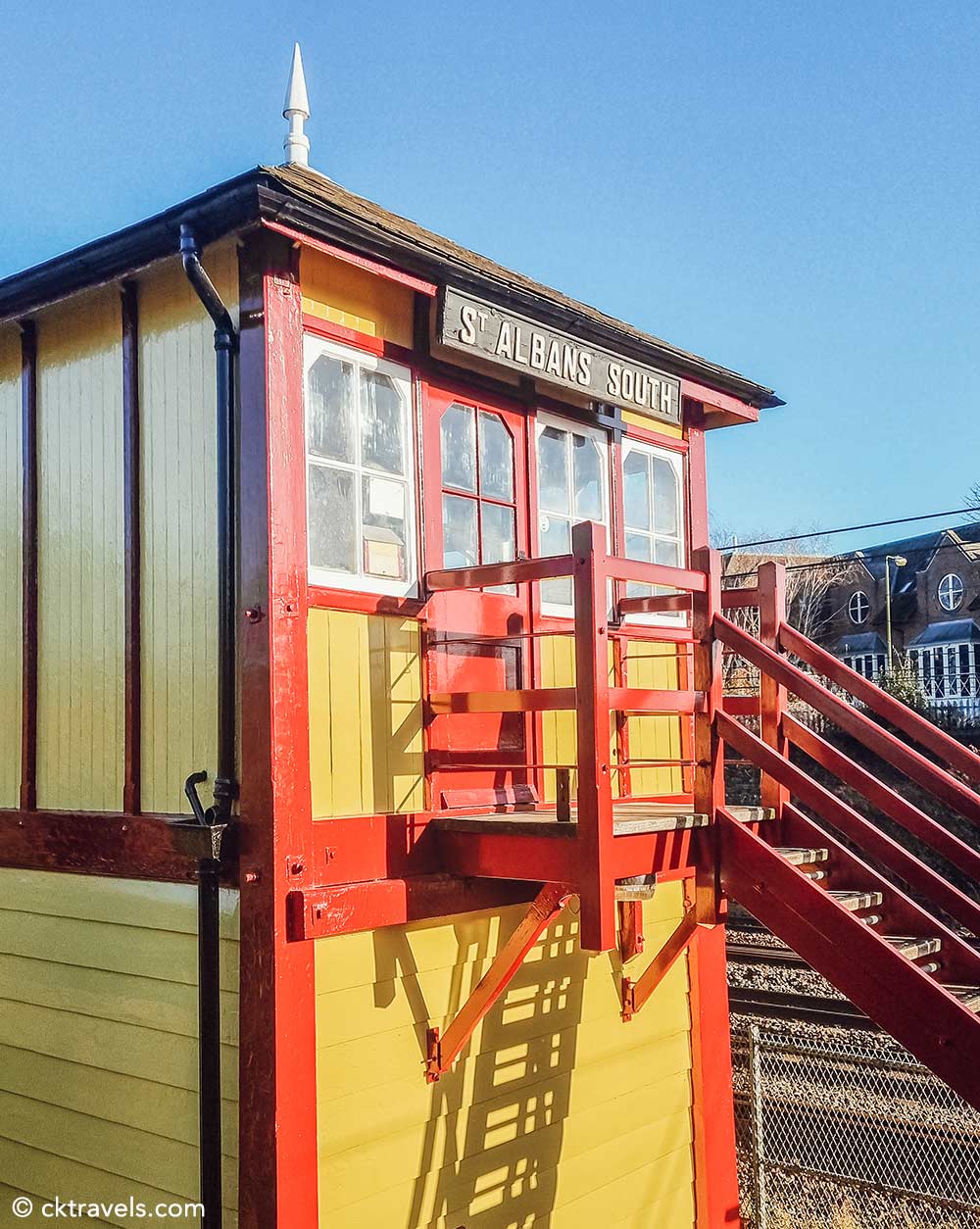
Ran by volunteers, the St Albans Signal Box Preservation Trust looks after the Grade II listed signal box and has a yard full of vintage items like railway signs and model trains – bringing out your inner trainspotter.
This is a nice activity to add to your St Albans things to do list, but not one to come especially for, as it is generally open only one Sunday a month to visitors.
11. St Albans Pubs and Bars
As you expect from such a historic city, St Albans has a sweet selection of pubs and bars to choose from, from topnotch tap rooms to historic hang outs and traditional taverns. Why not dive on ‘inn’ to one of these St Alban’s pubs or bars:
Mad Squirrel Taproom
We like the Mad Squirrel Taproom because a) the name (best title ever) but also b) because of the view and beer garden, located next to St Albans Cathedral and the Vintry Garden. Oh yes, and also because the Mad Squirrel has a (nut) cracking selection of beers on tap. You’d be ‘nuts’ (sorry) to miss out.
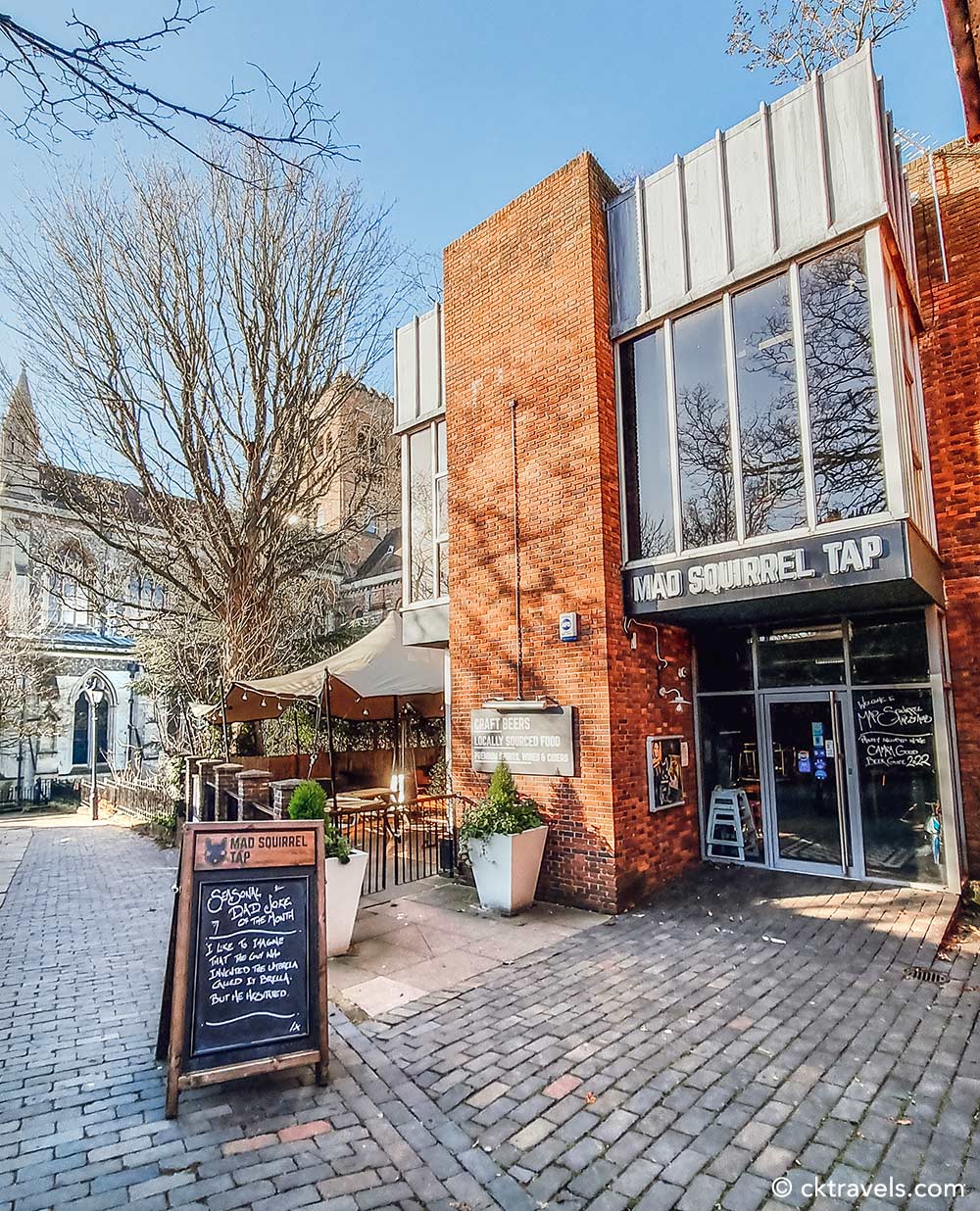
The Boot
St Alban’s ‘The Boot’ pub is all about the setting, in the heart of the city’s market place and a typical British boozer, with a red telephone outside ‘to boot’. The pub building itself dates back to the 1500s and is grade II listed.
The War of the Roses reputedly started outside the door of the Boot in St Alban’s Marketplace (maybe the beer was off that night #joking).
The Lower Red Lion on Fishpool
We aren’t sure what happened to the Upper Red Lion, but this 17th century St Albans pub is located along the well preserved Fishpool residential area of the city. The Lower Red Lion is a nice neighbourhood pub that also doubles as a hotel offering bed and breakfast (or should that be beer and breakfast).
The Six Bells
Just down the road from St Michael’s Church, the Six Bells in St Albans is a half-timbered historic bar (dating from the 16th century) with a huge beer garden out back. Your typical British boozer with bags of charms (and plenty of ales and beers too).
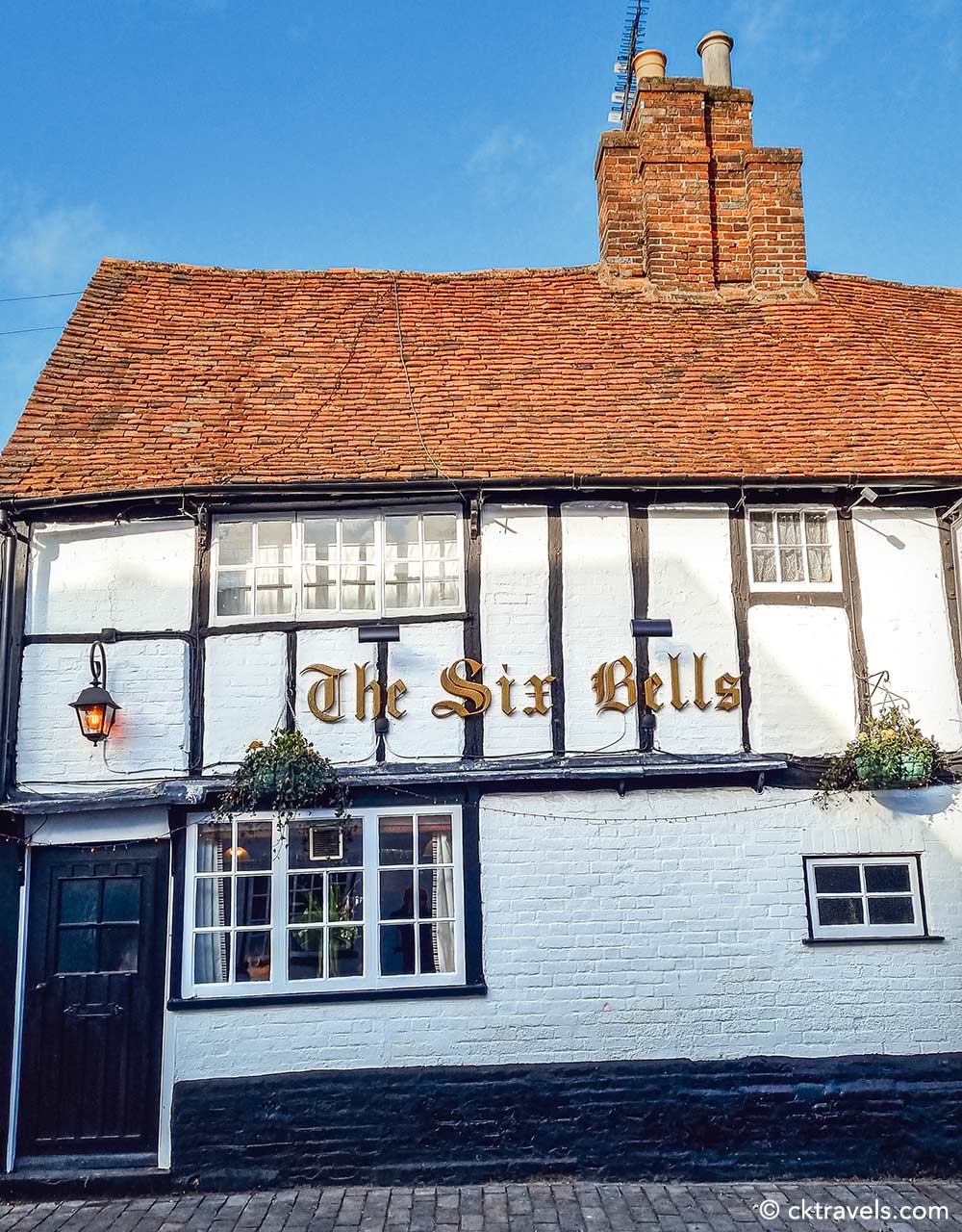
Robin Hood
We highlight the Robin Hood in St Albans mainly because it is an award winning CAMRA pub renowned for its ale selection and because it is the best St Albans pub close to the St Albans Railway station – so a good location to grab an ale just before hopping back on your train if relevant.
12. Fishpool Street
Not so much a St Albans activity and more of a nice neighbourhood to walk around, Fishpool is a historic residential road that has rows and rows of charming cottages and terraced houses.
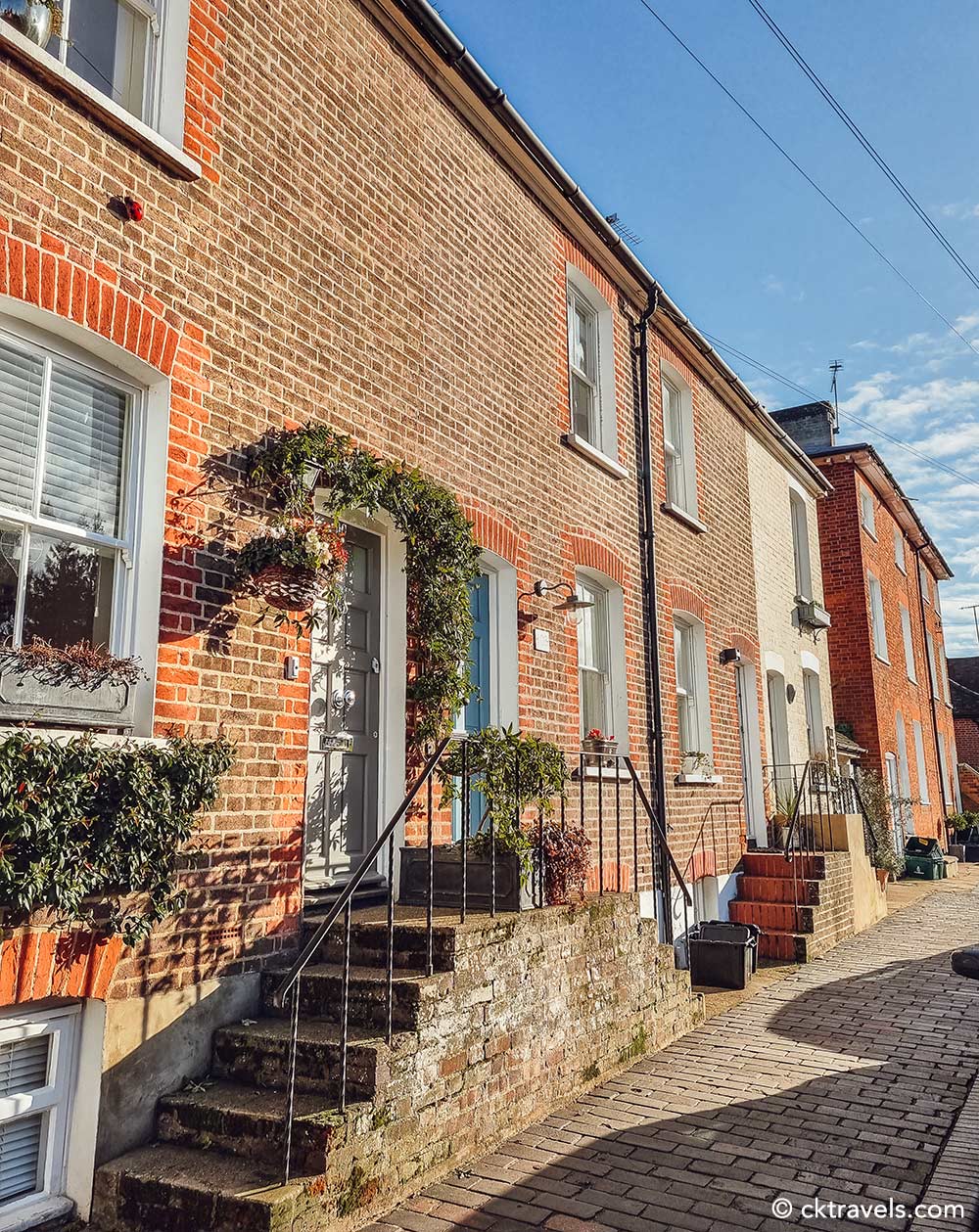
If you first explore Fishpool Road from the St Peter’s Village end, you’ll notice several Fishpool Houses that have been converted from former coaching houses and pubs that still retain old or vintage pub signs outside (and the Lower Red Lion is still open for business today).
One of the nicest places to live in St Albans (and housing prices to reflect this), the walk from one end of Fishpool Street to the other takes around 10 minutes and is a wonderful window in to English village life (yet so close to St Albans City Centre).
13. St Michael’s Church and St Michaels Village
St Michael’s Church is a 10th century parish church, set in gorgeous grounds and the archetypal English village church – it is Grade I listed and free to visit.
We liked St Michael’s Church as the setting is serene and so peaceful – it was nice to see people during our visit here sitting on the bench out the front of St Michael’s Church chatting and catching up over a coffee.
Nearby, St Michael’s village is one of the prettiest neighbourhoods in St Albans, with its two village pubs (The Six Bells and The Rose and Crown) as well as the aforementioned Waffle House.
14. The Vintry Garden
We hadn’t read about the Vintry Gardens before we visited St Albans so we were delighted to discover it, a quiet place of solitude and reflection with lots of benches and views overlooking St Albans Cathedral.
With several sections and huge trees providing shade in summer, The Vintry Garden is part of the cathedral grounds and was turned into a vineyard by local monks from St Albans abbey in the 14th century. Like others on the day we visited, we just sat here with a coffee in silence and soaked up the views of the cathedral.
15. St Peter’s Church
St Peter’s Church is another peaceful place to explore in the heart of St Alban’s City Centre, located just a stone’s throw from the hustle and bustle of Market Place and the St Albans High Street.
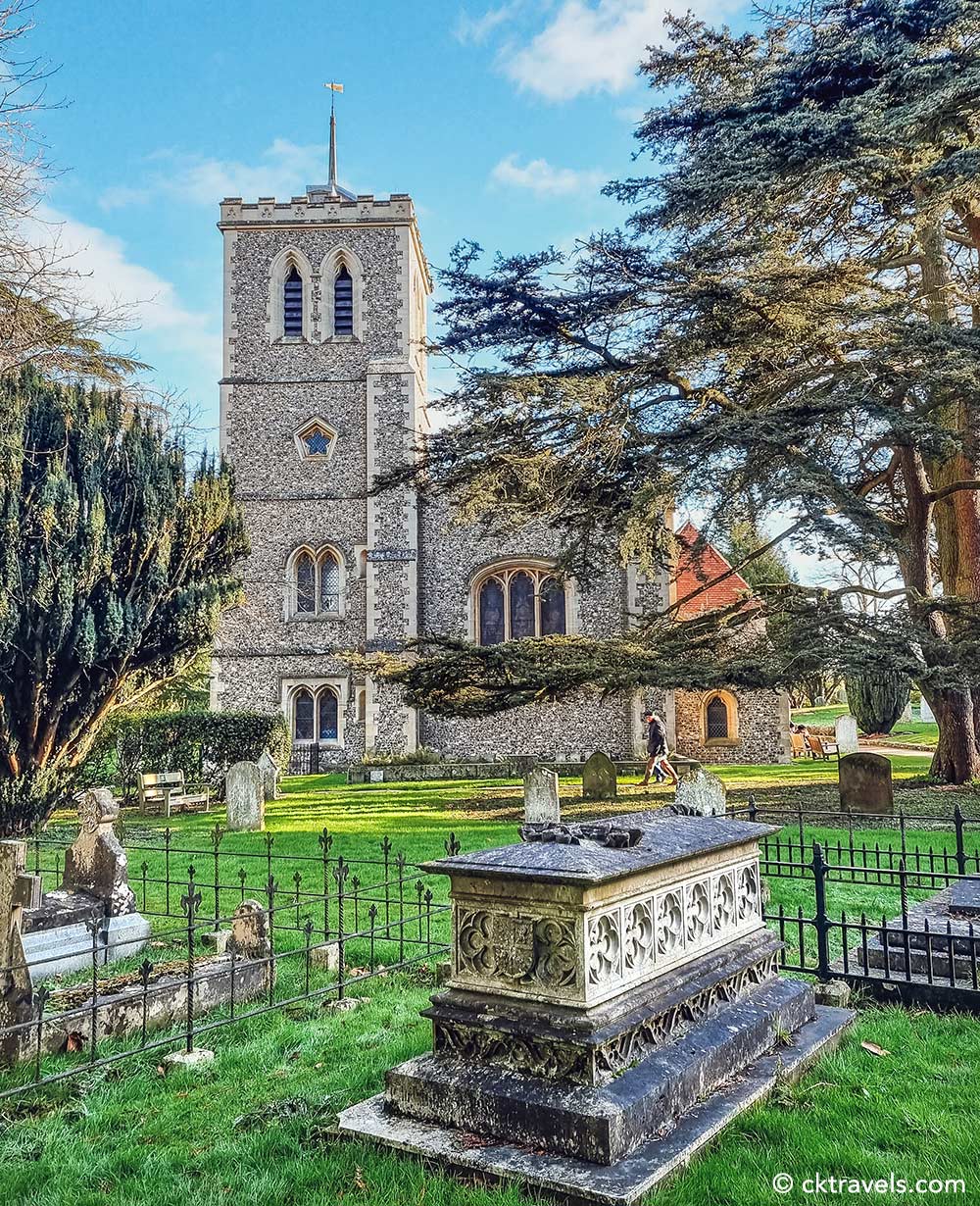
St Peter’s Church originally dates back to around 948AD and was built to receive pilgrims and prepare them for their visit to the shrine of St Alban with St Albans Cathedral and Abbey
Other UK posts you might like
- The best North London brewery taprooms
- Things to do in Shepherd’s Bush, London
- The ultimate guide to the Bermondsey Beer Mile
- The best brewery taprooms in London
- Best Hackney Wick bars and breweries
- Walthamstow Beer Mile Ultimate Guide with map
Did you enjoy our things to do in St Albans blog post? Let us know in the comments or by sharing the blog on social media. Follow us on Instagram and YouTube!

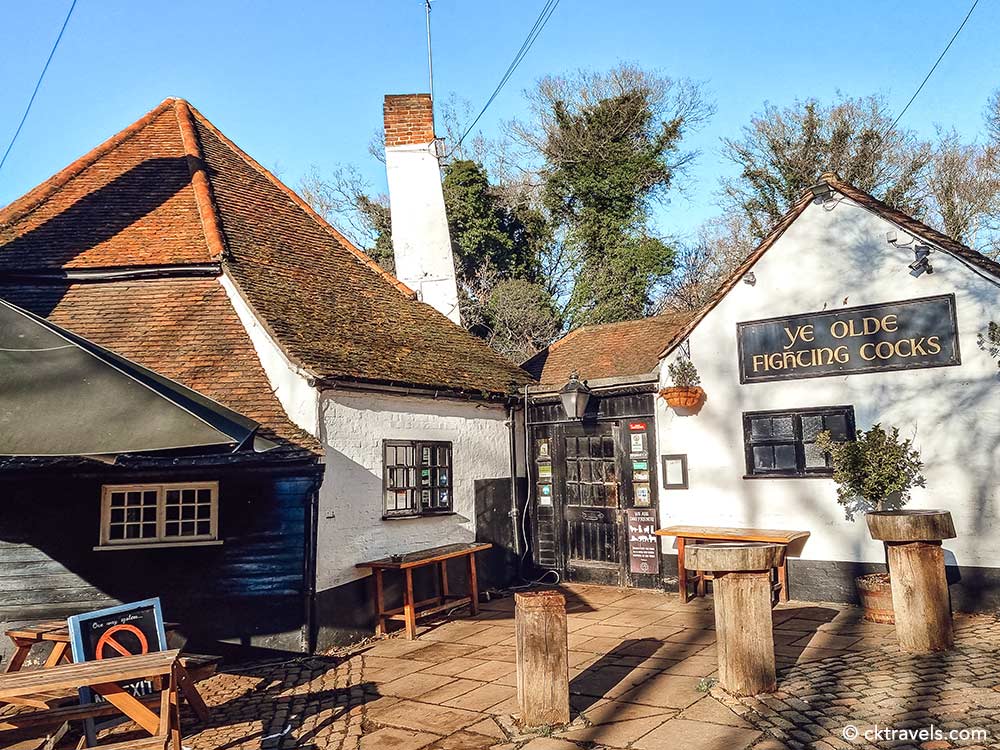
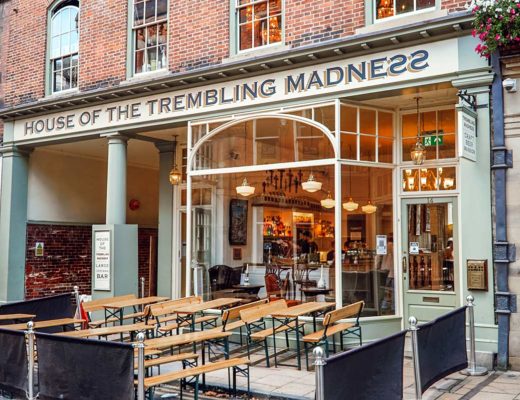
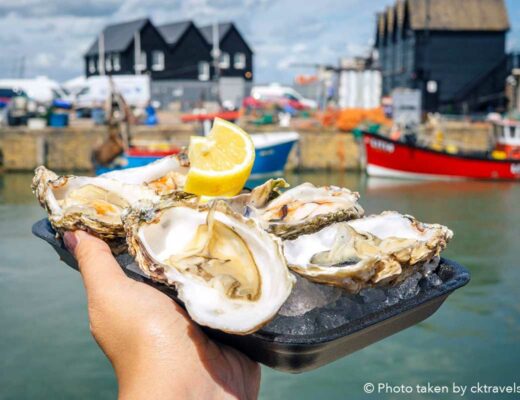
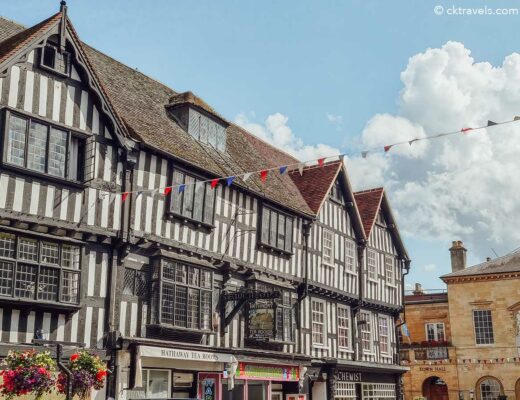
No Comments